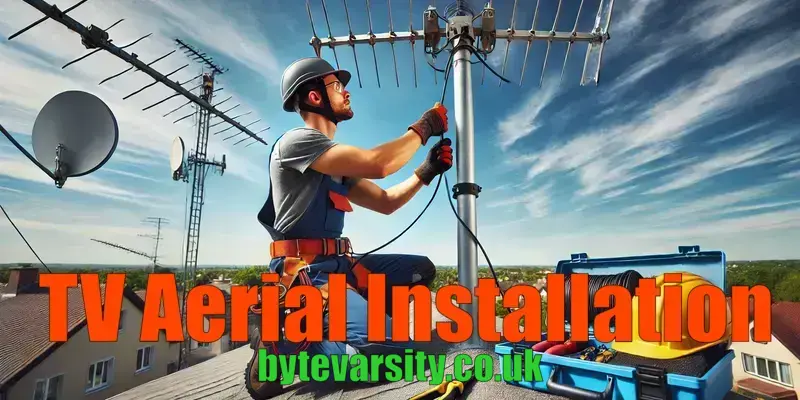Why TV Aerials Are Essential for Your Home
Television is a primary source of entertainment and information for most households, and a reliable TV aerial is the key to uninterrupted viewing. Whether you’re cutting the cord on cable or upgrading your home entertainment system, a well-installed TV aerial ensures crisp picture quality and stable audio. It captures signals directly from broadcasting stations, eliminating the need for a cable provider and offering you access to free-to-air channels. A good aerial setup provides a cost-effective solution for long-term entertainment.
Choosing the Right TV Aerial for Your Needs
Indoor Aerials for Convenience
Indoor aerials are compact and user-friendly, making them an excellent choice for urban areas with strong signal coverage. They are easy to position near windows or elevated shelves, and their portability makes them a favorite among renters. However, they might struggle in areas with dense obstructions or weak signals.
Outdoor Aerials for Stronger Signals
If you live in a rural or suburban area, an outdoor aerial is the way to go. These aerials are mounted on rooftops or poles, where they have a clear line of sight to broadcasting towers. Though installation is more complex, outdoor aerials offer superior reception and are less prone to interference from walls, furniture, or appliances.
How TV Aerials Work
TV aerials capture electromagnetic signals broadcast by TV stations and transmit them to your television. The aerial’s ability to deliver a clear signal depends on its placement, the quality of its components, and the distance from the broadcast tower. Outdoor aerials are better suited for long-distance signal capture, while indoor aerials work well in proximity to strong signals. Factors like weather, tall buildings, and surrounding objects can influence the reception.
Professional Installation vs. DIY: What Should You Choose?
The Case for DIY Installation
If you’re tech-savvy and confident in handling tools, DIY installation can save you money. Basic indoor aerials can often be installed without any professional help. However, outdoor installations require careful consideration of height, signal direction, and secure mounting, which can be tricky without experience.
Benefits of Hiring a Professional
Professionals bring expertise, proper equipment, and the ability to troubleshoot on the spot. They ensure the aerial is mounted securely, aligned with broadcast towers, and connected with minimal signal loss. Additionally, hiring a professional reduces risks associated with climbing and working at heights, especially for outdoor aerials.

Step-by-Step TV Aerial Installation
Preparation
- Research the nearest broadcasting tower using online tools to determine the best direction for your aerial.
- Ensure your chosen location is free of obstructions like trees, tall buildings, or heavy electronic interference.
Installing the Aerial
- For indoor aerials, position the device near a window or on an elevated shelf. Use trial and error to find the strongest signal.
- For outdoor aerials, securely mount the aerial on a pole or rooftop. Ensure it faces the broadcast tower for optimal reception.
Connecting to the TV
- Use a high-quality coaxial cable to connect the aerial to your television.
- Perform a channel scan on your TV to locate all available broadcasts. Adjust the aerial’s position if needed for better clarity.
Common Problems and Solutions
Interference Issues
If your signal frequently drops or the picture is pixelated, interference might be the cause. This could stem from nearby electronic devices, large metal objects, or even bad weather. Solutions include repositioning the aerial, upgrading to a signal amplifier, or ensuring the aerial has a direct line of sight to the tower.
Weak Signal Areas
For areas with poor signal strength, consider installing a signal booster or opting for a high-gain aerial. These devices amplify weak signals, improving both picture and sound quality.
Why Proper Installation Matters
A poorly installed aerial can lead to frequent disruptions, low-quality images, and sound distortion. Ensuring correct alignment, stable mounting, and quality connections not only improves your viewing experience but also extends the lifespan of your equipment. While DIY methods may suffice for some, professional installation ensures long-term reliability and performance.